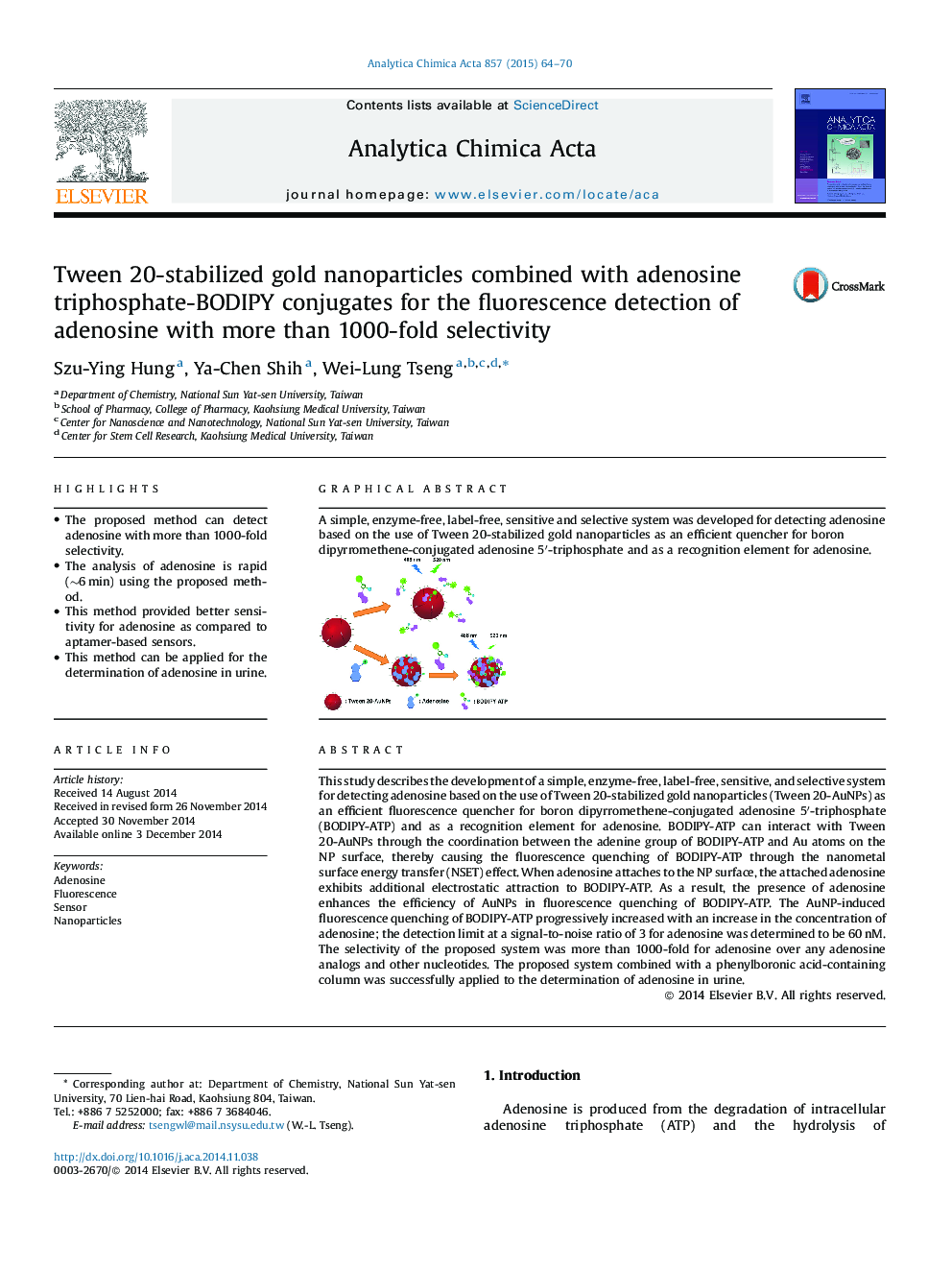| Article ID | Journal | Published Year | Pages | File Type |
|---|---|---|---|---|
| 1164170 | Analytica Chimica Acta | 2015 | 7 Pages |
•The proposed method can detect adenosine with more than 1000-fold selectivity.•The analysis of adenosine is rapid (∼6 min) using the proposed method.•This method provided better sensitivity for adenosine as compared to aptamer-based sensors.•This method can be applied for the determination of adenosine in urine.
This study describes the development of a simple, enzyme-free, label-free, sensitive, and selective system for detecting adenosine based on the use of Tween 20-stabilized gold nanoparticles (Tween 20-AuNPs) as an efficient fluorescence quencher for boron dipyrromethene-conjugated adenosine 5′-triphosphate (BODIPY-ATP) and as a recognition element for adenosine. BODIPY-ATP can interact with Tween 20-AuNPs through the coordination between the adenine group of BODIPY-ATP and Au atoms on the NP surface, thereby causing the fluorescence quenching of BODIPY-ATP through the nanometal surface energy transfer (NSET) effect. When adenosine attaches to the NP surface, the attached adenosine exhibits additional electrostatic attraction to BODIPY-ATP. As a result, the presence of adenosine enhances the efficiency of AuNPs in fluorescence quenching of BODIPY-ATP. The AuNP-induced fluorescence quenching of BODIPY-ATP progressively increased with an increase in the concentration of adenosine; the detection limit at a signal-to-noise ratio of 3 for adenosine was determined to be 60 nM. The selectivity of the proposed system was more than 1000-fold for adenosine over any adenosine analogs and other nucleotides. The proposed system combined with a phenylboronic acid-containing column was successfully applied to the determination of adenosine in urine.
Graphical abstractA simple, enzyme-free, label-free, sensitive and selective system was developed for detecting adenosine based on the use of Tween 20-stabilized gold nanoparticles as an efficient quencher for boron dipyrromethene-conjugated adenosine 5′-triphosphate and as a recognition element for adenosine.Figure optionsDownload full-size imageDownload as PowerPoint slide
